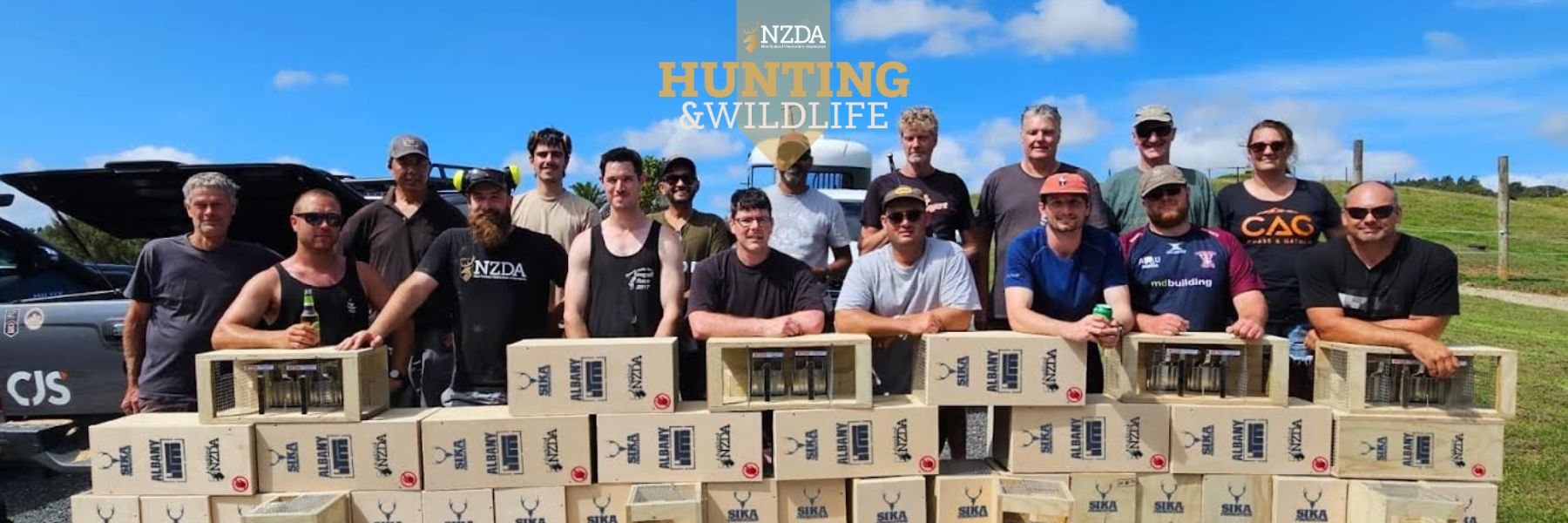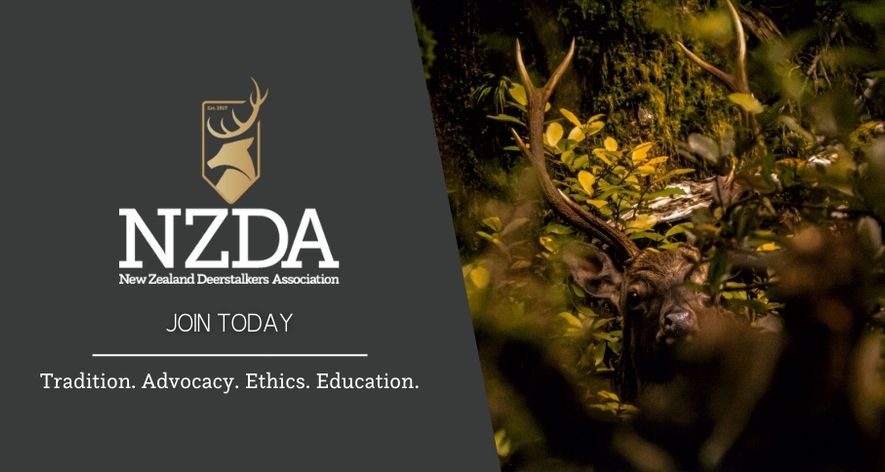Hunting and Wildlife Magazine - Issue 225 - Winter 2024
Words By: Courtney Hickton
The NZDA Auckland Branch, once known for its limited engagement in conservation projects, has undergone a remarkable transformation. The perception of isolation within city walls or a previous lack of inspiration among the pool of urban deerstalkers we call our members, may have been the cause.
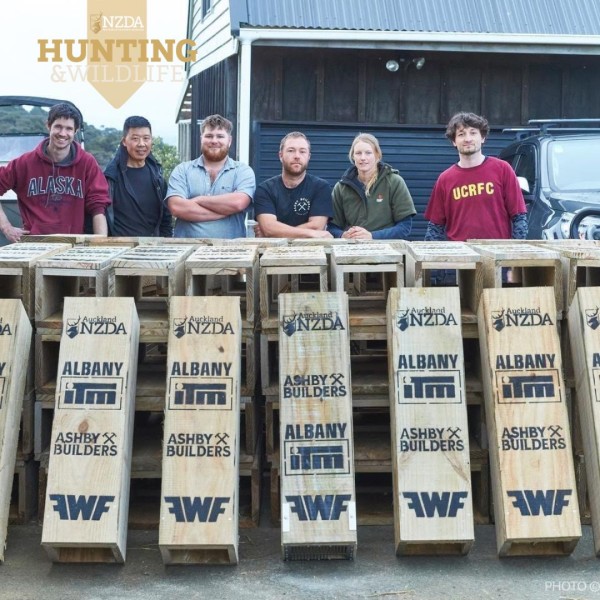
A testament to the transformative power of passion and vision, our branch has rapidly launched a conservation committee led by two individuals with a deep love for the backcountry and a broad scope of conservation interests, achieving more in a few months than we had in a decade.
The challenges of urban isolation – travel time and money are a hindrance for any city-based hunting club. Despite all of this, Ben Frame and Sam Ashby have overcome these barriers and made significant contributions to conservation on a national level. This passionate hunter-conservationist duo has some inspiring words to share, from building hundreds of trap boxes and creating new lines to trapping hundreds of pests in mere months.
Sam, as the legend goes, a trip to Fiordland inspired your endeavours?
“Last year (2023), I headed into a Wapiti block and saw first-hand the benefits of what the Fiordland Wapiti Foundation was doing. We had multiple pairs of Whio (blue ducks) on the river whistling at us, Kiwi calling outside our tents at night, and Kea hanging out on the open tops. This sparked a conversation with Roy Sloan, asking how I could contribute towards their hunter-led conservation work. He suggested that I build some trap boxes for his team.
“I chatted with a mate, Ben, from the club, who had recently been appointed conservation convenor and hunted Fiordland a couple of years earlier. He suggested I chat with our club president, Cam Haliday, who’s involved with a big inter-island freight company. He said he would send whatever I could build. A few chats with my local ITM branch had them eager to help sponsor the project, and we were underway.”
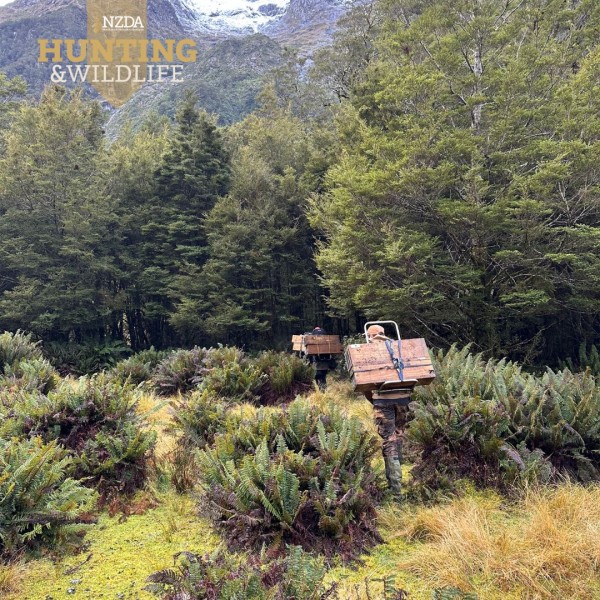
Ben, what triggered your determination to implement a conservation subcommittee?
“Throughout my time at university, I was lucky enough to spend hundreds of days in the mountains, and after university, I walked the South Island leg of the Te Araora trail. Through these experiences, exploring the different landscapes and ecosystems that inhibit the New Zealand backcountry, I transformed my thinking from being an end consumer of our wild game animals into a conservation mindset of adding value to the land. I have tried to make an effort to contribute towards giving back and showing that hunters can be part of the solution to the challenges we currently face on public land.
When I moved to Auckland and joined the deerstalkers, I met a few like-minded individuals at the club keen to contribute to hunter-led conservation. The idea started with the Fiordland trap project, led by Sam. Following this successful project, the group has dived into the conservation space and achieved great work, with big plans in the pipeline.”
What projects have you undertaken since kicking off in 2023?
- Fiordland Traps - “We built 101 trap boxes for the FWF, which were sent down late last year, and we just finished installing them in the Wapiti area of Fiordland National Park at the end of May.”
- Sika Collar - “As a club we fundraised towards sponsoring a Sika stag collar. This is a project undertaken by the Sika Foundation where they live capture some young Sika spikers, put a tracking collar on them and release them back into the Kaimanawas. This helps researchers understand their movements year-round, which is an invaluable resource.”
- Sika Country Trapline – “We initially helped the Sika Foundation check some of their existing trap lines in the Oamaru/Kaipo river catchments. This inspired us to set up a new trap line in the Waipakihi River, where there hadn’t been any previous trapping efforts. We have built 50 double-set doc200s and installed them along a 5km stretch of the Waipakihi River. We have committed to servicing this trap line ourselves, with the help of a Taranaki local who has hunted here for 45 years. In four months, we have caught nearly 100 stoats and well over 100 rats.”
- Ongoing servicing of Sika Country –“Due to such a high kill rate of stoats in the Waipakihi River trap line, we have been approached by the Sika Foundation to build and install a further 20 trap boxes. We have sought funding and intend to complete this project soon.”
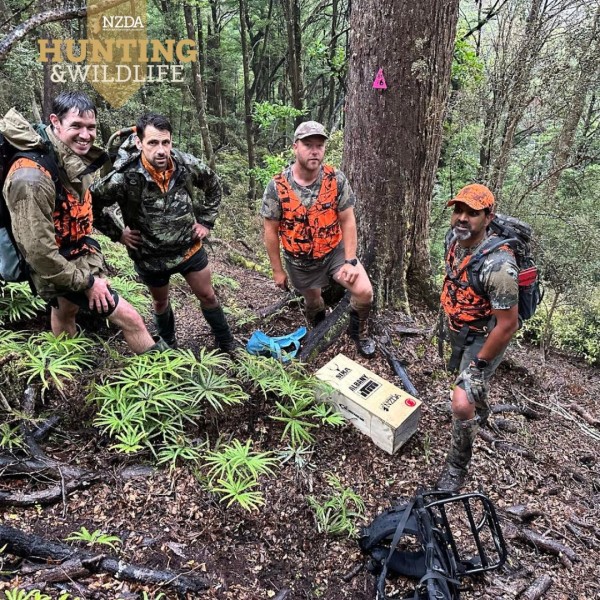
How are you making these conservation projects more achievable for city-based hunters?
“We have been completing the trap building workshops in Auckland, then either shipping them down the line or driving them down as we travel to install them ourselves. Having workshops close to the club rooms allows more members to help without individuals having to spend too much time or money dedicated to travelling, giving us a higher turnout. Many people are keen to help when they find an opportunity that fits within the time or money they have to give.”
Tell us more about how you’re raising funds for these projects.
“After completing the initial trap boxes for the Fiordland Wapiti Foundation, we were told how much the trap hardware and steel grates would cost. The idea of this cost falling back on the FWF didn’t sit well, as when I commit to something, I like to see it through to the end. We set up a fundraiser within the branch to try and come up with the required funds to cover the rest of the project and approached a few hunting brands to supply prizes for this.”
“We also found that a group of people don’t have any time to give but are happy to donate towards a cause.”
What have the commitment levels looked like for you so far?
“Other than the specific trap building projects, we have committed to checking our trap line in the Waipakihi River 10 times a year. The club has also agreed to cover some of our members' travel costs to keep this momentum. We have also just been down to Fiordland National Park this May to install the first set of trap boxes we built. We hope that as projects increase, so will the hands and feet that make it happen.”
Every project requires financial backing; tell us how you have approached local businesses to contribute more annually.
“Initially, I spoke with my local timber merchant, ITM Albany, about sponsoring the Fiordland traps. The GM had just come out of the Milford Track and had seen the predator trap boxes along the side of the track. I informed him that there were some of these in the Wapiti area but not as many as the FWF wanted to see. He was immediately interested and said he would cover half the cost of the timber. A bit more persuasion had him covering closer to the entire lot. My small construction company covered the remaining timber and hardware costs and my time to pick up and drop off materials and complete trap boxes.
Since then, ITM Albany suggested I approach their national head office to keep the momentum we had gained. The national ITM team offered to sponsor our Sika trap boxes and then asked me to write a proposal asking them for an annual fund. A few meetings later with their marketing team, we secured a very generous amount of annual funding.”
What's in the pipeline for the future?
“Our vision has grown exponentially since this started a year ago. What started as a one-off predator trap building workshop has snowballed, and we are now looking to complete further projects with the Sika Foundation and try to do some work a bit closer to home. The Predator Free Muriwai group has recently approached us to help them construct trap boxes; we’ll also get our local members involved with checking the boxes once installed.”
Do you have any final thoughts to share with the keen readers who have made it this far?
“I feel the best thing to come of this movement has been to see our club members jump into action and get behind this. There has been so much passion that it’s almost as if the club members were waiting for the initial spark to get things moving. We have a very committed team with an amazing support network behind us. I can’t thank everyone enough as there are too many names to fit on one page.”
Electronic or print copies
Members receive an electronic version by email but printed copies can be ordered (for a print and postage fee) which will be delivered to your home.
To order printed copies visit our NZDA Shop at www.nzda.shop
Read Previous Editions Online
Read the historic editions online for free now. Browse here.
Write for Hunting and Wildlife


